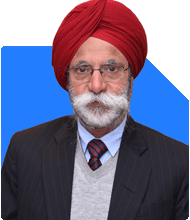NRI couple with joint bank account: How will TDS refund affect us?
Ramalingam Kalirajan |10906 Answers |Ask -Follow
Mutual Funds, Financial Planning Expert - Answered on Feb 06, 2025
He has an MBA in finance from the University of Madras and is a certified financial planner.
He is the director and chief financial planner at Holistic Investment, a Chennai-based firm that offers financial planning and wealth management advice.... more

Hello, Myself and wife are NRI s and maintaining a joint bank account, when we retire and get back home, how the tds refund going to affect? Is it shared or one person have to claim?
Understanding TDS on NRI Accounts
Banks deduct TDS on interest earned in NRI accounts.
The rate depends on the type of account and applicable tax laws.
NRIs can claim a refund if the tax deducted is higher than their actual tax liability.
Knowing how tax works helps in efficient tax planning.
Who Should Claim the TDS Refund?
Refund claims depend on whose income is being taxed.
In joint accounts, only the primary holder is taxed.
The TDS refund must be claimed by the person whose PAN is linked to the account.
Only one person can claim the refund in most cases.
How to File the TDS Refund Claim?
The person claiming must file an income tax return.
The refund request should include details of TDS deducted.
Form 26AS helps track the deducted tax.
If both spouses have separate incomes, each must file returns individually.
A structured approach ensures smooth refund processing.
Repatriation and Account Conversion After Retirement
NRI accounts must be converted to resident accounts upon return.
Failing to convert can lead to tax complications.
Inform banks about residential status change to avoid excess TDS.
Timely conversion helps in better tax compliance.
Finally
When returning to India, ensure proper tax planning for TDS refunds. Only the primary account holder can claim the refund. Converting accounts to resident status is necessary to avoid tax issues.
Best Regards,
K. Ramalingam, MBA, CFP,
Chief Financial Planner,
www.holisticinvestment.in
https://www.youtube.com/@HolisticInvestment
You may like to see similar questions and answers below
Mihir Tanna |1090 Answers |Ask -Follow
Tax Expert - Answered on Oct 23, 2023
T S Khurana |538 Answers |Ask -Follow
Tax Expert - Answered on Aug 06, 2024
T S Khurana |538 Answers |Ask -Follow
Tax Expert - Answered on Feb 19, 2025
Ramalingam Kalirajan |10906 Answers |Ask -Follow
Mutual Funds, Financial Planning Expert - Answered on Dec 19, 2025
Nayagam P P |10859 Answers |Ask -Follow
Career Counsellor - Answered on Dec 19, 2025
Ramalingam Kalirajan |10906 Answers |Ask -Follow
Mutual Funds, Financial Planning Expert - Answered on Dec 19, 2025
Ramalingam Kalirajan |10906 Answers |Ask -Follow
Mutual Funds, Financial Planning Expert - Answered on Dec 19, 2025
Ramalingam Kalirajan |10906 Answers |Ask -Follow
Mutual Funds, Financial Planning Expert - Answered on Dec 19, 2025
Radheshyam Zanwar |6751 Answers |Ask -Follow
MHT-CET, IIT-JEE, NEET-UG Expert - Answered on Dec 19, 2025
Radheshyam Zanwar |6751 Answers |Ask -Follow
MHT-CET, IIT-JEE, NEET-UG Expert - Answered on Dec 19, 2025
Samraat Jadhav |2514 Answers |Ask -Follow
Stock Market Expert - Answered on Dec 18, 2025
Reetika Sharma |432 Answers |Ask -Follow
Financial Planner, MF and Insurance Expert - Answered on Dec 18, 2025
Reetika Sharma |432 Answers |Ask -Follow
Financial Planner, MF and Insurance Expert - Answered on Dec 18, 2025

























